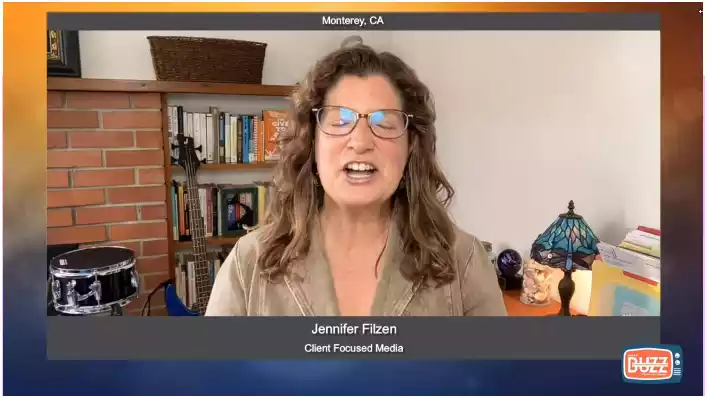Optimizing Workflows: Best Practices for Streamlining Prior Authorization
Explore the best practices for streamlining prior authorization to enhance workflows, reduce delays, and improve patient care. Start optimizing today!

The prior authorization process is a step required by insurance companies to review and approve certain treatments, medications, or procedures before they are covered. This process starts when a healthcare provider submits a request to the insurance company, including medical documentation that supports the need for the service. The insurance company then evaluates the request to ensure it meets their coverage criteria. If approved, the service will be covered under the patient’s insurance plan. If denied, the provider or patient can appeal the decision. This process helps ensure that care is both necessary and cost-effective.
Let’s dive in!
Table of Contents
Best Practices for Streamlining Prior Authorization
Prior authorization is a critical process within the healthcare industry that ensures patient prescriptions and treatments undergo necessary approvals before services are rendered. While this process is essential for controlling costs and verifying the medical necessity of treatment plans, it can often be a source of bottlenecks, delays, and frustrations for healthcare providers and patients. Adopting best practices to streamline prior authorization workflows is imperative to mitigate these challenges. This piece explores practical methods and efficient solutions for optimizing the prior authorization process, enhancing efficiency and patient satisfaction.
Understanding Prior Authorization
Prior authorization is a pre-approval process mandated by insurance companies to determine whether a patient’s health plan covers a prescribed treatment, test, or medication. It involves a multifaceted review to ensure the proposed intervention is medically necessary and cost-effective.
Common Challenges in Prior Authorization
- Complexity and Variability: Different payers have varying criteria and documentation requirements for prior authorizations, leading to complexity and time-consuming processes for healthcare providers.
- Manual and Paper-Based Processes: Many healthcare providers still rely on manual, paper-based submission processes, which increase the likelihood of errors and delays.
- Communication Gaps: Inadequate communication between providers, payers, and patients can result in misunderstandings and further delays.
- Lack of Standardization: The submission process requires more industry-standard forms and workflows, making it labor-intensive and efficient.
Best Practices for Streamlining Prior Authorization
1. Implementing Electronic Prior Authorization Systems
Transitioning from paper-based to electronic prior authorization (ePA) systems is paramount for enhancing workflow efficiency. EPA systems automate submitting, tracking, and approving prior authorization requests, drastically reducing the time and effort required. Key benefits include:
- Faster Processing: Electronic systems expedite the submission and review process, often resulting in same-day approvals.
- Reduced Errors: Automation minimizes human errors associated with manual data entry and documentation.
- Enhanced Transparency: Providers can track the status of requests in real time, ensuring prompt follow-up actions when needed.
2. Leveraging Integration with Electronic Health Records (EHR)
Integrating prior authorization systems with electronic health records (EHR) ensures seamless data exchange and eliminates the need for redundant data entry. This integration facilitates the following:
- Automatic Population of Required Information: Information from a patient’s EHR can automatically populate prior authorization forms, reducing the administrative burden on healthcare staff.
- Streamlined Workflows: Integrated systems create a cohesive workflow, making it easier for providers to initiate and manage prior authorizations within a single platform.
- Improved Accuracy: Consistent and up-to-date patient data ensures that requests for prior authorization are precise and comprehensive.
3. Standardizing Processes and Documentation
Establishing standardized processes and documentation guidelines across the organization helps achieve consistency and efficiency. This can be achieved by:
- Developing Standard Operating Procedures (SOPs): Creating comprehensive SOPs that outline the steps and documentation required for each type of prior authorization.
- Using Standardized Forms: Utilizing industry-standard forms can expedite the filing procedure and lessen the possibility of rejections due to incomplete or inconsistent information.
- Regular Training and Education: Providing ongoing training for healthcare staff on best practices and updates in prior authorization requirements.
4. Enhancing Communication Between Stakeholders
Patients, payers, and healthcare providers must communicate effectively for a streamlined prior authorization process. Strategies to enhance communication include:
- Designated Points of Contact: Assigning specific staff members to handle prior authorization inquiries and follow-ups can ensure timely and consistent communication.
- Transparent and Timely Information for Patients: Educating patients about the prior authorization process, including expected timeframes and required documentation, can help manage their expectations and reduce anxiety.
- Regular Feedback Mechanisms: Establishing channels for regular feedback between providers and payers can help identify and address recurring issues or bottlenecks.
5. Pre-Authorization and Predetermination Programs

- Pre-Check Systems: Implement systems to pre-check eligibility and authorization requirements before submitting the complete prior authorization request.
- Predetermination Services: Establish services to predetermine the necessity and coverage for frequently requested treatments or medications, thus reducing the need for individual prior authorizations.
6. Optimization of Internal Workflow
Optimizing internal workflows within healthcare organizations involves examining current processes and identifying areas for improvement. Tactics include:
- Workflow Mapping: Graphically depicts the earlier authorization process to identify bottlenecks and inefficiencies.
- Staff Allocation and Role Delineation: Ensure that staff roles are clearly defined and that tasks are allocated appropriately to balance the workload and improve process flow.
- Utilization of Checklists: To avoid delays and rejections, implement checklists to ensure all required documentation and steps are completed before submission.
7. Continuous Monitoring and Improvement
Implementing a framework for continuous monitoring and improvement can help maintain streamlined prior authorization processes. Steps to achieve this include:
- Performance Metrics: Define and track performance metrics such as approval times, rejection rates, and turnaround times to assess the effectiveness of prior authorization workflows.
- Regular Audits: Regularly audits prior authorization processes to identify and rectify gaps or inefficiencies.
- Stakeholder Feedback: Collect and analyze feedback from all stakeholders to inform ongoing improvements and adaptations to the workflow.
8. Collaboration with Payers
Collaborating closely with payers can significantly enhance the efficiency of the prior authorization process. Effective collaboration strategies include:
- Building Relationships: Establish strong working relationships with payer representatives to facilitate smoother communication and quicker resolution of issues.
- Engaging in Joint Process Improvement Initiatives: Work with payers to identify common pain points and develop joint initiatives to streamline the prior authorization process.
- Negotiating Standard Agreements: To reduce the need for individual prior authorizations, negotiate standard agreements for frequently used treatments and medications.
9. Leveraging Technology for Automation
Beyond ePA systems, leveraging additional technology solutions can further optimize the prior authorization process. These technologies include:
- Robotic Process Automation (RPA): Implementing RPA can automate repetitive tasks such as data entry and status checks, freeing staff to focus on more complex issues.
- Data Analytics: Using data analytics tools to analyze prior authorization trends and identify areas for improvement.
- Real-Time Dashboards: Deploying real-time dashboards to visually track the status of prior authorization requests and critical performance indicators.
I'm very thankful for Portiva who I know is looking after my practice while I'm gone the virtual assistants can manage prescription refills, documents they can triage patients and just kind of answer administrative questions and they can handle a lot on their own. But also, they're very good about contacting me if there's any emergency or anything I need to attend to. So I'm very thankful for Portiva they can help almost any provider almost anywhere and it really allows for some good work-life balance as I'm getting to experience right now at my family farm so I'm very thankful for Portiva and I'm very happy to use their services"

Board Certified Family Medicine Physician

Portiva's Virtual Medical Assistant - I have all the support I need. There's somebody checking my email, any patient messages. Patients are still able to schedule and handle any scheduling issues and any kind of billing that needs to still go through. Portiva hands handles it all for me. I have support i have somebody that I can access 24/7 pretty much. It's all very seamless. If somebody has an emergency or needs a medication called in. I know that the va's at portiva will handle that for me.

Board Certified Family Medicine Physician

10. Patient Advocacy and Support Programs

- Patient Navigators: Assign patient navigators to assist patients through the prior authorization process, providing guidance and support.
- Educational Materials: Develop and distribute educational materials to help patients understand the prior authorization process and their role in it.
- Support Groups: Create support groups for patients who frequently undergo treatments requiring prior authorization, providing a platform for sharing experiences and advice. These strategies and initiatives can help healthcare organizations streamline their prior authorization processes, reduce delays and rejections, and improve patient care. By prioritizing communication, education, process optimization, collaboration with payers, and leveraging technology, healthcare providers can effectively navigate the complexities of prior authorization to ensure timely access to necessary treatments for their patients. So, let’s continue working together towards a more efficient and patient-centered approach to prior authorizations.
Conclusion
In conclusion, streamlining the prior authorization process is essential for enhancing patient care and ensuring timely treatment access. By focusing on effective communication, continuous improvement, and collaboration with payers, healthcare organizations can significantly reduce delays and improve overall patient satisfaction. Leveraging technology and establishing patient support programs further solidifies this commitment to a more efficient, patient-centered approach. As the healthcare landscape evolves, ongoing adaptation and innovation will be crucial in navigating the complexities of prior authorizations and ultimately delivering higher-quality care to patients.
To learn more about approval delays that can enhance your medical practice. Discover more about Portiva and unlock a world of possibilities by visiting our homepage today!
- Roadmap to understanding prior authorization
- Advocating patient safety with precertification services
- Outsourcing for prior authorization success
- Patient access and prior authorization
- Prior authorization costs impact healthcare access
- Making prior authorization more efficient
- Fair prior authorization practices
- Engaging patients in prior authorization
- Streamlining prior authorization procedures
- Providers vs. payers in prior authorization
- Mastering prior authorization
- Comprehensive prior authorization training
- Optimize prior authorization journey
- Providers and payers in prior authorization
- Operational excellence in prior authorization
- Demystifying prior authorization
- Complex world of prior authorization
- Mastering the prior authorization
- Prior authorization unveiled


